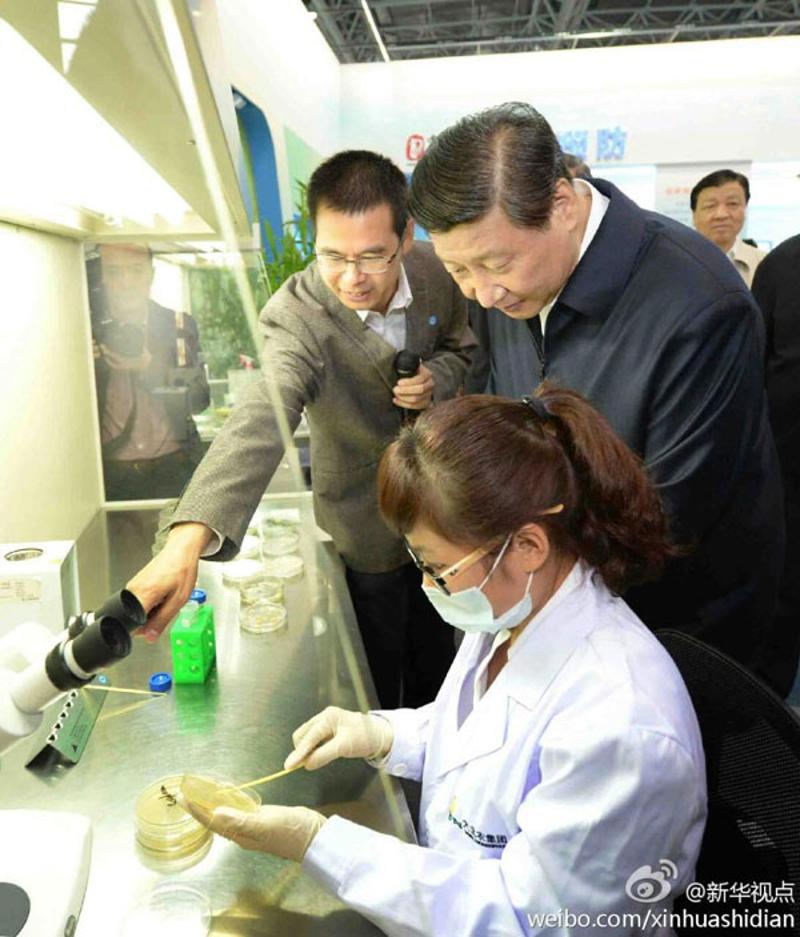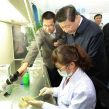
Arrests in Guangdong Spearhead Effort to Clean up Innovation System—But Reveal Commitment to State-led Research
Publication: China Brief Volume: 14 Issue: 4
By:

The firing and arrest of more than 50 officials “from the number one down to the grassroots” in the Provincial Science and Technology Department of Guangdong has been hailed in Chinese official media as a step forward in the fight against corruption—but, as they take pains to emphasize, the crackdown says more about how much is wrong with the system than it does about efforts to repair it (Xinhua, February 18). Official accounts of the arrests suggest that Chinese leaders are profoundly dissatisfied with the results of the centralized system of research financing, supercharged in the wake of the 2008 stimulus by Hu Jintao’s indigenous innovation (ziben chuangxin) policy, and reviled by liberal economists for its emphasis on central planning and foreign businesses for encouraging intellectual property theft. But, while Xi has discussed market-led approaches to innovation, most attention seems to be focused on cleaning up and repairing the current, state-led system, which allocates money mainly to government research agencies and state-owned enterprises. In 2013, annual innovation spending passed 1 trillion RMB (about $165 billion) (Xinhua, February 18).
According to official coverage of the arrests, the current system is simply not working. Many articles have revisited an October speech by Science and Technology Minister Wan Gang in which he condemned the system as massively corrupt, reciting a litany of arrests, calling for more investigations and describing himself as “angry, saddened and shocked” by the state of the system (People’s Daily, October 12). In addition to investigations by Party and government officials, he proposed creating an open database of research projects to invite public oversight, a call that has been echoed in official media in response to the arrests in Guangdong. In an interview given the same day, he also cited air pollution as a barrier to attracting foreign talent to Beijing’s research centers. Wan, the only minister in China not to belong to the Communist Party (he is the chairman of the China Zhi Gong Party, one of the “democratic” parties of the United Front), is respected for expertise gained as an engineer at Audi and President of Shanghai’s Tongji University, but is widely believed to be ineffectual owing to a lack of Party connections. His speech, given during the runup to the Third Plenum, was largely overshadowed by news about the meeting on economic reform, but his comment about being “angry, shocked and surprised” has since emerged as the watchword of a campaign against research corruption.
Xinhua’s coverage of the recent Guangdong case portrayed it as a victory, but also emphasized that it was “Just the tip of the iceberg” of research corruption (Xinhua February 18). The article likened innovation funding to catnip (Tangseng rou) for corrupt officials, quoting a study by the Chinese Association for Science and Technology, which found that only 40 percent of the more than 1 trillion RMB allocated to research last year was actually spent on research projects. A commentary from the Qianjiang Evening News (Qianjiang Wanbao), picked up by Xinhua and People’s Daily Online, called the arrests—“cause for more worry than satisfaction.” By stealing money intended for scientific research, the article argues, officials are undermining a “fundamental productive force” of the economy (Xinhua, February 18). More liberal outlets have used the arrests to call for a wholescale rethinking of the system of state-directed research, with the Beijing News arguing in an editorial that “Marketization is the best medicine for research corruption,” proposing a system of competitive grants modeled on international practice (Beijing News, February 18).
Chinese President Xi Jinping has taken an interest in innovation. According to Xinhua, he has delivered four “important speeches” on the topic, two marking the launches of the Shenzhou-10 manned mission in July and the Chang’e-3 lunar probe in December, one a during a July inspection tour of the Chinese Academy of Science (CAS), and one during a September visit to the “Chinese Silicon Valley” in Beijing’s Zhongguancun district. The space speeches, likely aimed at the general public, were largely presented in the rhetorical mode of the “China Dream,” emphasizing progress and self-reliance. While celebrating the launch of the Chang’e-3, he said that “Innovation is the soul of a people’s progress, an inexhaustible wellspring of national prosperity, and it is also the Chinese people’s most distinctive national endowment” (Xinhua, January 6).
At CAS, however, Xi called for reform of the existing system. He criticized waste and inefficiency and called for the spirit of the mass line in innovation work (People’s Daily, July 18, 2013). If this was intended to strike fear into the hearts of Academy officials, it did not—a study session held the following week on the lessons of Xi’s speech concluded that the Academy needed more funding and a greater role in political decision-making (CAS website, July 30). At Zhongguancun, however, Xi went further, identifying innovation as a sector in need of “deepening reform” to rectify the relationship between government and the market. While the state should continue to guide innovation and “seize the high ground” using major state projects, and to increase allocations for research, Xi also emphasized the role of private entrepreneurship in innovation. He called for reforms to education, tax policy, capital allocation and—most importantly—intellectual property protection to support innovation (Xinhua, October 1, 2013).
China’s leaders appear to recognize that the current system of innovation financing has created little more than a feeding trough for established economic interests to extract money from the state. But the range of solutions on offer—focusing on private entrepreneurship, an ARPA-like system of grant applications, or simply a crackdown inside the state system—suggest that they do not know how to fix it. Dysfunctional as it is, the rapidly-growing 1 trillion RMB a year innovation bureaucracy may simply be too big to dismantle.





